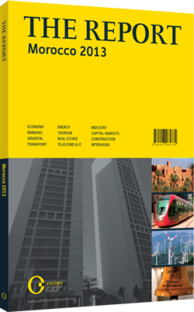OBG talks to Lahcen Haddad, Minister of Tourism

Interview: Lahcen Haddad
To what extent is the hotel industry currently meeting the demand for beds, and what can be done to boost accommodation options in the medium term?
LAHCEN HADDAD: There are large geographical differences in this respect. Marrakech, for instance, has enough capacity hence we are monitoring the potential for overcapacity. However, if we want to reach our goal of 20m visitors annually, then we inevitably need to boost tourist facilities to accommodate this number. Destinations such as Tangier and Tetouan require additional capacity. At present, we have close to 10,000 beds available in this region, but we are seeking up to 15,000 in a few years from now, spread out over different categories of hotels. With regard to the Atlas and Valley, further effort is needed to attract investment, in particular to increase the number of ecolodges and boutique hotels. Overall, the general picture indicates there are sufficient bed numbers in Marrakech and increasingly in Agadir, which are our mature destinations; emergent capacity in Tangier/Tetouan and Casablanca; whilst we need to build capacity in Rabat and Fes, and also recognise a need for more capacity in the Al Hoceima-Nafor-Oujda axis and in Ouarzazate.
What measures are needed for tourism in Morocco to be diversified towards ecotourism?
HADDAD: Ecotourism is not necessarily a high-end activity, as visitors can also stay with the locals and enjoy the scenery in a sustainable way. There is not always a need to build large resorts that alter the landscape. Indeed, it is important to have a positive impact on communities, such as buying from local artisans. We are, in fact, developing a programme whereby small communities and businesses can benefit through more localised tourism. This will include visitors being able to hike through the mountains and to stay in small cottages, which will have a limited impact on the environment. Only a limited number of tourists currently visit mountainous and rural areas, so we are hoping for local communities to fully benefit from these visitors.
How can new markets be developed to attract a wider range of visitors to Morocco?
HADDAD: There are three different markets to mention beyond Europe. However, it is important to note that the European market will most likely remain the largest for Morocco over the next 10 years. That said, the World Tourism Organisation says that growth will mainly come from emerging and BRIC countries. Immediate emerging markets for us are Eastern European countries, in particular Poland and Russia. Asian countries meanwhile are more of a mid- to long-term priority. Brazil is another promising market, with which we also share historical and cultural links.
A major, and more traditional, market is that of Arab visitors. The Gulf region is particularly promising given that more than 4m Saudis travel overseas annually. Although we currently only receive 70,000 of them, this number could potentially rise to more than 100,000. There are numerous daily flights from Saudi Arabia, the UAE and Qatar, which is a help for attracting tourists.
How is the domestic tourism segment developing?
HADDAD: One quarter of all tourists here are in fact Moroccan, and we want to boost this number to reach 40% to ensure Morocco is less vulnerable to shocks from abroad. The objective of Plan Biladi, which is part of Vision 2020, is to create tourist stations that cater to Moroccan families at affordable rates. We have already built one in Ifrane, with one soon to be completed for Imi Ouaddar, north of Agadir, another for Mehdia, near Kenitra, and one in the north. Investors have shown interest, especially from Arab countries and Moroccan companies. Other tourist stations will follow in El Jedida and Marrakech, so as to have eight to 10 stations in all. At the same time, we are also working with hotels to guarantee preferential rates to Moroccans, as part of the Kounouz Biladi programme. Finally, in collaboration with the Ministry of Education, we are introducing a staggered system of holiday period for pupils to avoid school holidays all being taken at the same time.
You have reached the limit of premium articles you can view for free.
Choose from the options below to purchase print or digital editions of our Reports. You can also purchase a website subscription giving you unlimited access to all of our Reports online for 12 months.
If you have already purchased this Report or have a website subscription, please login to continue.

